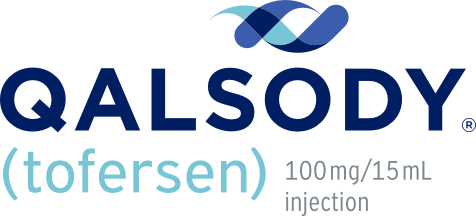Safety profile
Warnings and Precautions1
Myelitis and/or Radiculitis
- Serious adverse reactions of myelitis and radiculitis have been reported in patients treated with QALSODY
- Six patients treated with QALSODY experienced myelitis or radiculitis in the clinical studies
- Two patients discontinued treatment with QALSODY and required symptomatic management with full resolution of symptoms. In the remaining 4 patients, symptoms resolved without discontinuation of QALSODY
- If symptoms consistent with myelitis or radiculitis develop, diagnostic workup and treatment should be initiated according to the standard of care
- Management may require interruption or discontinuation of QALSODY
Papilledema and Elevated Intracranial Pressure
- Serious adverse reactions of papilledema and elevated intracranial pressure have been reported in patients treated with QALSODY
- Four patients developed elevated intracranial pressure and/or papilledema
- All patients received treatment with standard of care with resolution of symptoms, and no events led to discontinuation of QALSODY
- If symptoms consistent with papilledema or elevated intracranial pressure develop, diagnostic workup and treatment should be initiated according to the standard of care
Aseptic Meningitis
- Serious adverse reactions of aseptic meningitis (also called chemical meningitis or drug-induced aseptic meningitis) have been reported in patients treated with QALSODY
- One patient experienced a serious adverse reaction of chemical meningitis, which led to discontinuation of QALSODY
- One patient experienced a serious adverse reaction of aseptic meningitis, which did not lead to discontinuation of QALSODY
- In addition, nonserious adverse drug reactions of CSF white blood cell increased, and CSF protein increased have also been reported with QALSODY
- If symptoms consistent with aseptic meningitis develop, diagnostic workup and treatment should be initiated according to the standard of care
The most commonly reported adverse reactions (ARs) were pain, fatigue, arthralgia, CSF white blood cell increased, and myalgia1*
The safety of QALSODY was evaluated in 147 patients with SOD1-ALS. The median patient exposure was 119.4 weeks (range: 4 to 212 weeks). QALSODY was evaluated in the placebo-controlled VALOR and in the OLE studies. The mean age at entry in VALOR was 49.8 years (range: 23 to 78 years).
Less common adverse reactions
Serious adverse reactions of myelitis and radiculitis; papilledema and elevated intracranial pressure; and aseptic meningitis have occurred in patients treated with QALSODY. In the long-term extension study, nonserious adverse reactions of pyrexia have occurred with repeat administration of QALSODY.1
*Most common ARs were those occurring in ≥10% of patients treated with QALSODY and greater than placebo.
†Pain includes preferred terms of pain, back pain, and pain in extremity.
‡CSF white blood cell increased includes preferred terms of CSF white blood cell increased and pleocytosis.
